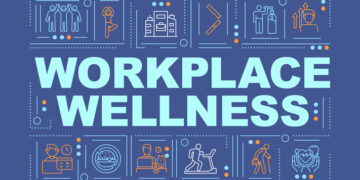7 Habits for a Healthy Lifestyle
Whether you’re trying to get fit or simply maintain your current fitness level, it’s the healthy habits that will keep you there. It can seem so easy for that certain super-fit set of people who have a healthy way of life that just comes naturally to them. But the truth is that they make a routine of it, and work for it. So how do join this gorgeous group that exudes wellness as a way of life? These 7 habits of incredibly healthy people will set you off on the right track.
1: Keep a structured schedule.
Highly healthy and fit people are consistent with their workouts. They have scheduled daily and/or weekly routines, and it’s not just about fitness; they tend to keep a structured schedule as a matter of self-discipline and organization. With this structure, you prioritize workouts and schedule other appointments around them. Having a scheduled routine makes it easier to stick to a fit lifestyle; it can even almost be like you are running on autopilot. Although this may not work if you’re not a morning person, keep in mind that research also shows that those who exercise in the morning are more likely to stay on track.
2: Follow a simple meal plan.
Highly healthy and fit people have simple meal plans. They eat similar meals every day, including the weekend. Poor choices on the weekend can sabotage the work you put in all week! This means a pretty consistent breakfast and lunch, alternating between two to three options. For dinner, there’s greater variety (have four to seven options in rotation).
Snacks and beverages are also predictable: water, sparkling water, tea, coffee, and protein shakes for bevies, nuts, fruits, high-protein yogurts, nut butter, and cottage cheese for snacking. Protein is a part of all their meals and snacks; in fact, health nuts often start each meal consuming protein first because they realize that protein is going to do just as much for their waistline, as it helps to build and maintain that metabolically active, life-extending muscle.
Protein sources make us burn more energy at rest (not only through more muscle but also because of something called the thermic effect of food or TEF), keep our stomach satisfied, and have blood sugar stabilized. And, since it makes you feel full, you’ll have less room for unhealthy choices and less desire to eat unhealthy choices.
3: Sleep on a regular schedule.
Highly healthy people have regular sleep schedules. Recognize that sleep is as important as diet, exercise, and being active. You have to sleep enough to have the energy you need to be active and for your body to restore and replenish itself as needed. If you have trouble sleeping, consider these sources of naturally occurring melatonin in foods: fruits and vegetables (tart cherries, corn, asparagus, tomatoes, pomegranate, olives, grapes, broccoli, cucumber), and nuts and seeds. 
4: Be N.E.A.T.
Highly healthy and fit people know that N.E.A.T (non-exercise activity thermogenesis) is just as important as their workout. What is this? It’s simply just how much you move that’s not exercise: fidgeting, choosing to park farther away from your destination, taking the stairs over the elevator or escalator, walking the dog, snow shovelling, housework, yard work, and more.
These activities help you burn calories by increasing your metabolic rate. All of these little movements can add up; in fact, recent research published in the Archives of Internal Medicine found that the amount of everyday activity you get—beyond the 30 minutes of traditional exercise you might be doing—might matter even more for your overall health than trips to the gym.
5: Stock your home with healthy food.
Look in a successfully fit person’s fridge, pantry, or cupboards. You won’t find cookies, crackers, chips, chocolate, ice cream, or soda. Why? They know you can’t eat sabotaging foods if you don’t have them. If a treat is wanted, a highly healthy-minded person walks to the store and gets a single serving of ice cream, rather than having a large tub of ice cream in their freezer. Another option is to replace a sabotaging treat with a healthier treat. Swap chips with popcorn, ice cream for chips, and popsicles with frozen grapes, for example.
6: Dine out smartly.
Highly healthy people eat and prepare most of their meals at home and when going out for meals, they will research restaurants and know the best choices to keep them on track. They choose to stay away from menu items that are fried and order their protein broiled, steamed, stir-fried, or poached.
Highly fit and healthy people also aren’t afraid to politely speak up in restaurants to make requests, whether that’s letting the server know that no bread is necessary at the table or asking that their dish be prepared with little or no sauces and with salad dressing on the side. Instead of the fried side option, ask for extra veggies instead. Another tactic to try: start off your meal with a large glass of sparkling water. Drinking water before meals can result in consuming fewer calories at those meals. 
7: Get back on track quickly.
Even healthy folks can fall off track. Extra cookies, ice cream, refreshing margaritas, and too many rest days are tempting to all of us. But highly healthy people get back on track quickly.
You can’t call something a treat if you’re having it regularly. Highly healthy people appreciate that their body functions best when they fill up with the best fuel. It’s like putting premium gas in our high-performance cars; we need to think of fueling our bodies the same way. If you need an extra kick, put some money on the line. Potentially losing money is the best incentive for staying fit, suggests new research from the University of Pennsylvania.
Researchers asked people to walk 7,000 steps a day for six months. Some walkers received $1.40 every day they achieved their goal. Others lost $1.40 whenever they failed to hit their daily steps. The participants who were faced with losing their money reached their goal 50 percent more often. This is a behavioural economic theory called loss aversion, says lead study author Dr. Mitesh Patel.
Your brain is hardwired to avoid loss at all costs. Use this natural inclination to your advantage the next time you start a new exercise program. Whether that’s a bet against yourself like the one in the study or by investing in some expensive workout classes that you’ll feel compelled to make it to rather than lose out on the money you spent on them.
















